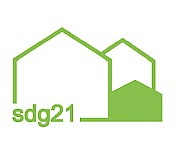 More than 30 mayors agreed on new strategic cornerstones for sustainability on Thursday, 14 November 2019. Among them is Bonn's Lord Mayor Ashok Sridharan. The city leaders want to expand the cities' scope for action and call for sustainable development to be placed at the heart of political decision-making.
More than 30 mayors agreed on new strategic cornerstones for sustainability on Thursday, 14 November 2019. Among them is Bonn's Lord Mayor Ashok Sridharan. The city leaders want to expand the cities' scope for action and call for sustainable development to be placed at the heart of political decision-making.
The key issues paper is an important contribution to positioning the local level in the German sustainability debate. It contains concrete impulses for the further development of the German sustainability strategy. The paper makes clear where the strengths of cities lie and how important they are as partners of the Federal Government in achieving the Sustainable Development Goals.
"Sustainability goes beyond climate protection. In addition to efforts to protect the climate, we must also be concerned with the social, ecological and economic framework for sustainability as a whole. Now and for future generations," explained Burkhard Jung, Mayor of the City of Leipzig and President of the German Association of Cities at the dialogue meeting.
"Even though it is a global issue, it has to be implemented in the cities and villages, and people have to live with our decisions there. Local politics is more important than it has been given credit for so far. The federal and state governments must coordinate their goals and measures even more strongly and in a structured dialogue with the municipalities and enable the municipalities to take their own action for more sustainability," said Jung.
Sustainability in Bonn
With its sustainability strategy adopted in February 2019, Bonn has set itself a systemic agenda for the implementation of the 17 Sustainable Development Goals (SDGs) of the United Nations. The declaration of climate emergency in July was now followed by the setting of an ambitious target: climate neutrality by 2035.
Bonn's mayor Ashok Sridharan, who is also president of ICLEI, a global network of cities, municipalities and regions for sustainability, says: "Sustainability, and climate protection in particular, is an existential issue for our cities. Our concrete projects for climate-friendly, energy-saving mobility and our urban planning influence how today's young people will live later. Moreover, our experiences provide the data on which meaningful strategies can be built."
An important topic of the key issues paper is cooperation. Bonn not only maintains project partnerships in which sustainable development projects find their place, but is also involved in professional cooperations such as ICLEI's "Green Circular Cities Coalition" or the "PREVENT Waste Alliance", which was launched by Federal Development Minister Gerd Müller.
Also anchored in the paper as an essential aspect of sustainability in the city society is the topic of education for sustainable development (ESD). Bonn's ESD activities include not only proven event formats such as the United Nations Day or the SDG Days, which have been established since 2018, but also a variety of other educational offerings, some of which are also offered in English.
Dialogue "Sustainable City
The "Sustainable City" dialogue is a long-standing project of the mayors. The dialogue process is supported and facilitated by the German Council for Sustainable Development (RNE). In this process, the lord mayors advocate for sustainable development in their cities in a special way. They exchange their own approaches as political leaders and explore the question of how municipal sustainability policy can gain more profile and weight in federal politics as well.
pdf download "Cornerstone paper of the mayors":
www.nachhaltigkeitsrat.de/...Strategische_Eckpunkte_November_2019.pdf
Keywords:
Bonn, DE-News, Communities, SDG 2030, Environmental policy



